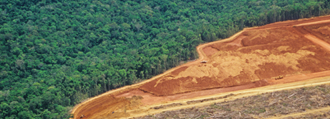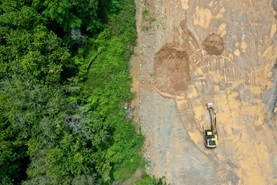From Commitment to Action: Corporate Realities and Strategies for Biodiversity Stewardship
With global biodiversity goals established and science-based targets for nature developed, the scaffolding is in place for companies to begin changing course. This article highlights key areas to advance progress through stewardship initiatives in 2024.
Constructing Zero Deforestation Portfolios to Combat Climate Change and Biodiversity Loss
The world’s forests are under threat, putting ecosystem services and global economic wealth in danger. But investors can help to fight deforestation. In this article, learn the reasons why investors should pursue zero deforestation portfolios.
Controversies in Biodiversity and Community Relations: A Holistic View of Their Interconnection
Our analysis reveals that for companies, biodiversity and community relations are highly interconnected. To effectively address biodiversity-related risk companies should also consider social factors and engage with Indigenous Peoples and local communities.
Biodiversity For Financial Institutions: Making the LEAP to Better Decision Making and Stewardship
Amid growing pressure to incorporate biodiversity into investment processes, we will outline how financial institutions can perform biodiversity assessments to make meaningful decision, contribute to biodiversity preservation and be accountable to regulators.
Post-COP15 Outlook: Evolving Investor Responsibilities in Biodiversity
Awaiting COP15’s Global Biodiversity Framework negotiation outcomes, financial market participants could face new regulatory pressure sooner than expected to integrate biodiversity assessment into their investment, decision-making processes.
Danish Delegation Engages Sustainalytics’ Biodiversity Expert, Enabling Front Row Access to COP15 Negotiations
Finance Day within the U.N. Biodiversity Conference (COP15) is fast approaching, and Morningstar Sustainalytics’ team members will be in attendance, each focusing on different investor biodiversity considerations related to active ownership.
Leveraging Blockchain to Improve Supply Chain Management - A Case Study for Household and Personal Products Companies
With growing scrutiny from stakeholders—international regulators and regional governments, NGOs, the general public, investors, and financial institutions—companies accused of human rights violations and environmental damage in their supply chains face substantial risks.
Biodiversity loss and climate change call for a nature-positive economy – Stewardship may lead the way
Financial institutions funding the supply chains affected by biodiversity loss stand to lose right alongside farmers, producers and retailers—and so, in turn, do investors. ESG stewardship continues to be a powerful investor instrument to mitigate risks on a changing planet. With growing expectations of double materiality, it is an opportunity for investors to have a greater societal impact and support the transition towards a nature-positive economy.
Mass Timber in Construction - Big Buildings, Smaller Carbon Footprint
As an innovation in the industry, mass timber construction emits significantly less carbon than traditional concrete and metal structures, while modular construction ensures usability across many building types. This article reviews some of the concerns over structural strength, fire safety, regulatory compatibility, cost savings and the sustainability of increased forestry. It then examines current mass timber buildings and projects and looks at their viability as an alternative material for the future.
Key Themes Shaping Proxy Voting in 2022
As the volume and breadth of ESG risk exposure continue to rise, the stage is set for another momentous proxy season. The trending topics of last year will continue to steer the agenda—with the prospect of even more substantial support from shareholders in 2022.
The Sustainability Conundrum of Living Income in Agriculture
Living Income is a crucial consideration among leading companies across some sectors and their supplier companies throughout the agricultural and food supply chain. Companies that manage ESG risk in their supply chains, making targeted investments to improve their resilience, are better positioned to build investor confidence.
3 Reasons to Skill Up and Scale Up ESG Stewardship in 2022
As our clients and the industry at large focus on proactively mitigating risk and capitalizing on this evolving landscape, stewardship will be a key lever for savvy investors—particularly those facing external pressure to divest. Here are the ESG themes we see influencing stewardship priorities this year.

















